Ahead of Easter service, carillonneur says Bok Tower is the 'holy grail' of carillons
The bells of Bok Tower have been filling Polk County’s air with their gloriously distinctive melodies since 1929, but their provenance dates to the 1600s when carillons first appeared in the Netherlands to cement the status of the towns that financed and built them. Given that the bells’ tones rarely change over the centuries, the music they produce speaks of the eternal.
On Sunday, as has been the case for decades, the glorious notes emanating from Bok Tower’s carillon will help usher in Easter at a sunrise service scheduled for 7 a.m. Gates open at 5:45 a.m. with admission to the gardens free until 8 a.m.
At the keyboard will be Geert D’hollander, an energetic practitioner of the art since his youngest years in Europe, where he studied piano, organ, chamber music, composition, choir directing and conducting.
Like Edward Bok himself, the quadrilingual D’Hollander, 57, is an immigrant who came to America, fell in love with the country and became a citizen. As there are only about 600 carillons in the entire world, D’Hollander’s full-time position as carillonneur makes him a rare bird.
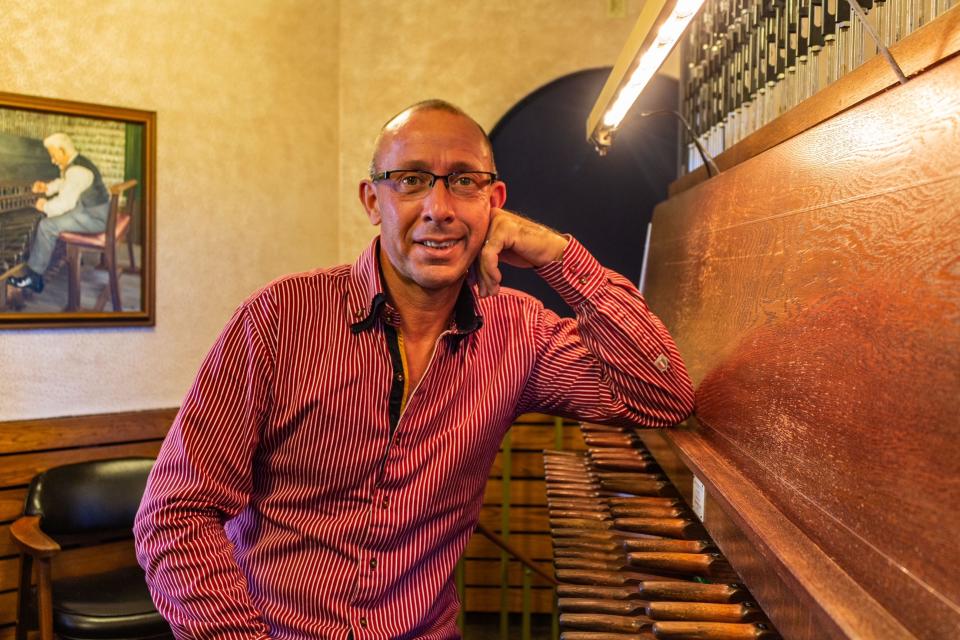
Lake Wales growth As development comes to Lake Wales, some residents worry about changes to quality of life
Environmental lands Polk Commission appoints land-acquisition panel as some question makeup of group
How much will it cost? Polk commissioners plan to raise county workers' pay
Q. Describe your childhood – where you grew up, what your musical influences were and when you decided to pursue this instrument as a career.
A. I was born and raised in Belgium, where there are a lot of carillons – my dad was a carillonneur also – so that’s how I got into it. You have to imagine when you’re a little boy, 4 or 5 years old, and you get a chance to climb medieval bell towers with your dad that nobody else has access to, it’s a real adventure. I almost felt like Harry Potter. You see all these things – secret doors, bats, owls, giant clockworks, things that are 500 years old that you can touch. Nobody’s around – it’s a little spooky, but for a little kid it’s just incredible. By the time I was 12 I told my dad, I want to do this too.
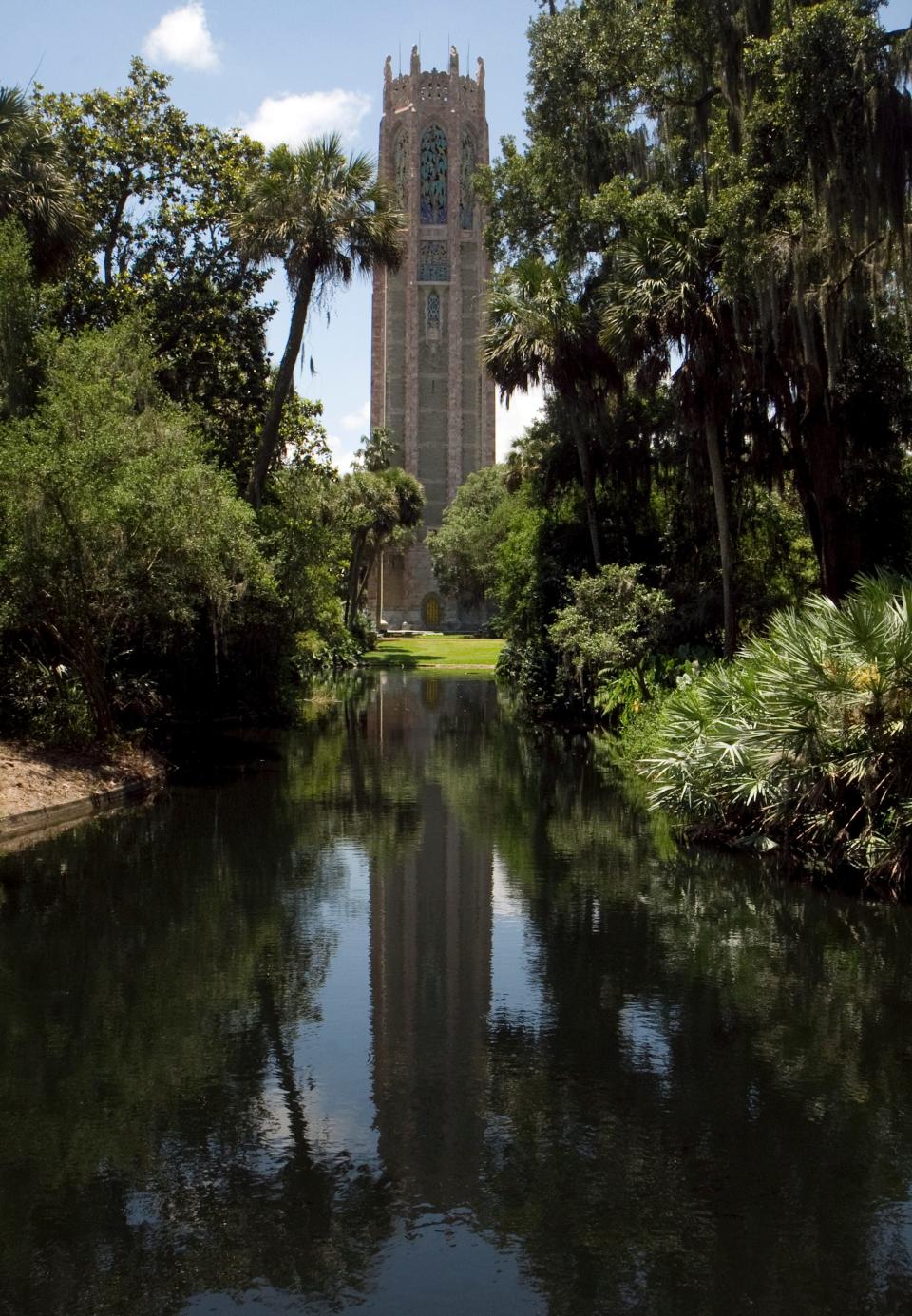
He took me to the Royal Carillon School in Belgium, near Antwerp, when I was 13 – the oldest carillon school in the world. He was a teacher there. I graduated when I was 17. At that point he said to me, “I’m going to show you the most beautiful instrument in the world.” And he took me from Brussels to Bok Tower Gardens. So here I was, a 17-year-old boy playing this thing and not knowing that one day this would be my instrument. If they had told me back then, “One day you’re going to be an American and this is going to be your tower,” I would not have believed them. I’m only the fourth carillonneur here in 94 years, which means that once you have this job, that’s the end of the ride. You don’t want to go anywhere else.
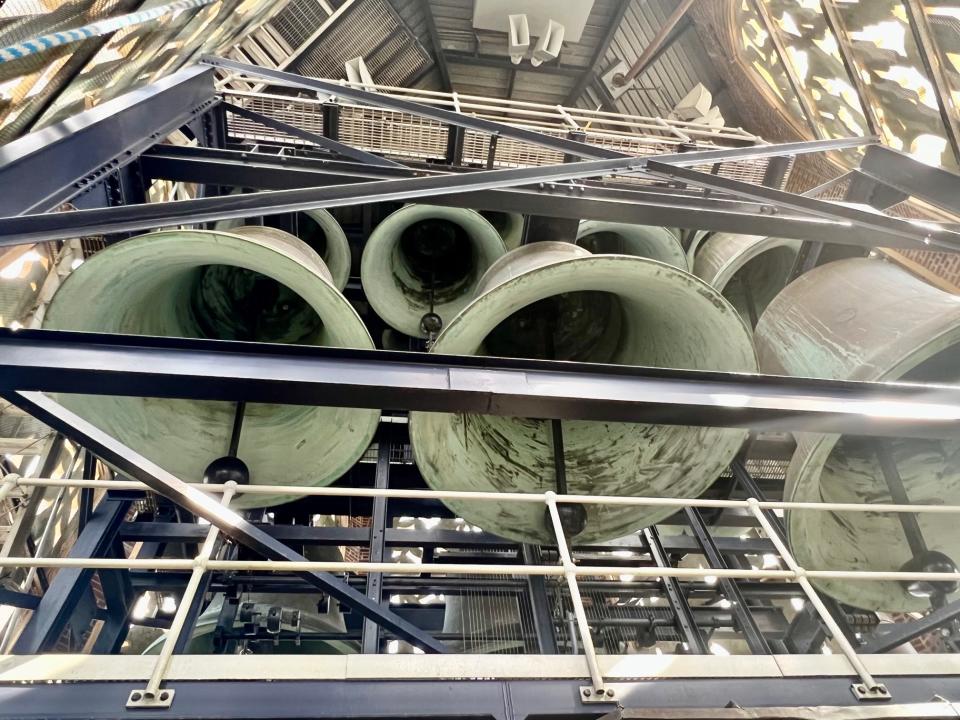
Q. And if you were to search the world, where would you likely find a superior instrument?
A. Nowhere. Among carillonneurs, Bok Tower is the holy grail. It has that reputation. Even the gardens – so many Floridians don’t even know about the gardens. Everybody in Europe knows about Bok Tower Gardens and people around here are like, “Yeah, we know it’s there but we never go.”
Q. There are millions of pianos and thousands of organs, but not nearly so many carillons and therefore not nearly so many jobs playing them. Was their scarcity a drawback or a draw?
A. I think one of the things I like about the carillon – I liked as a kid and I still do – is the physical aspect of it. If you’re playing challenging music, it gets so intense and you feel your whole body working – it’s almost like playing sports at a highly competitive level. The most difficult piano concertos are similar. There are 600 instruments worldwide but no two are the same – they’re all different. So you have to adapt very quickly. And you can hardly rehearse because everybody will hear you.
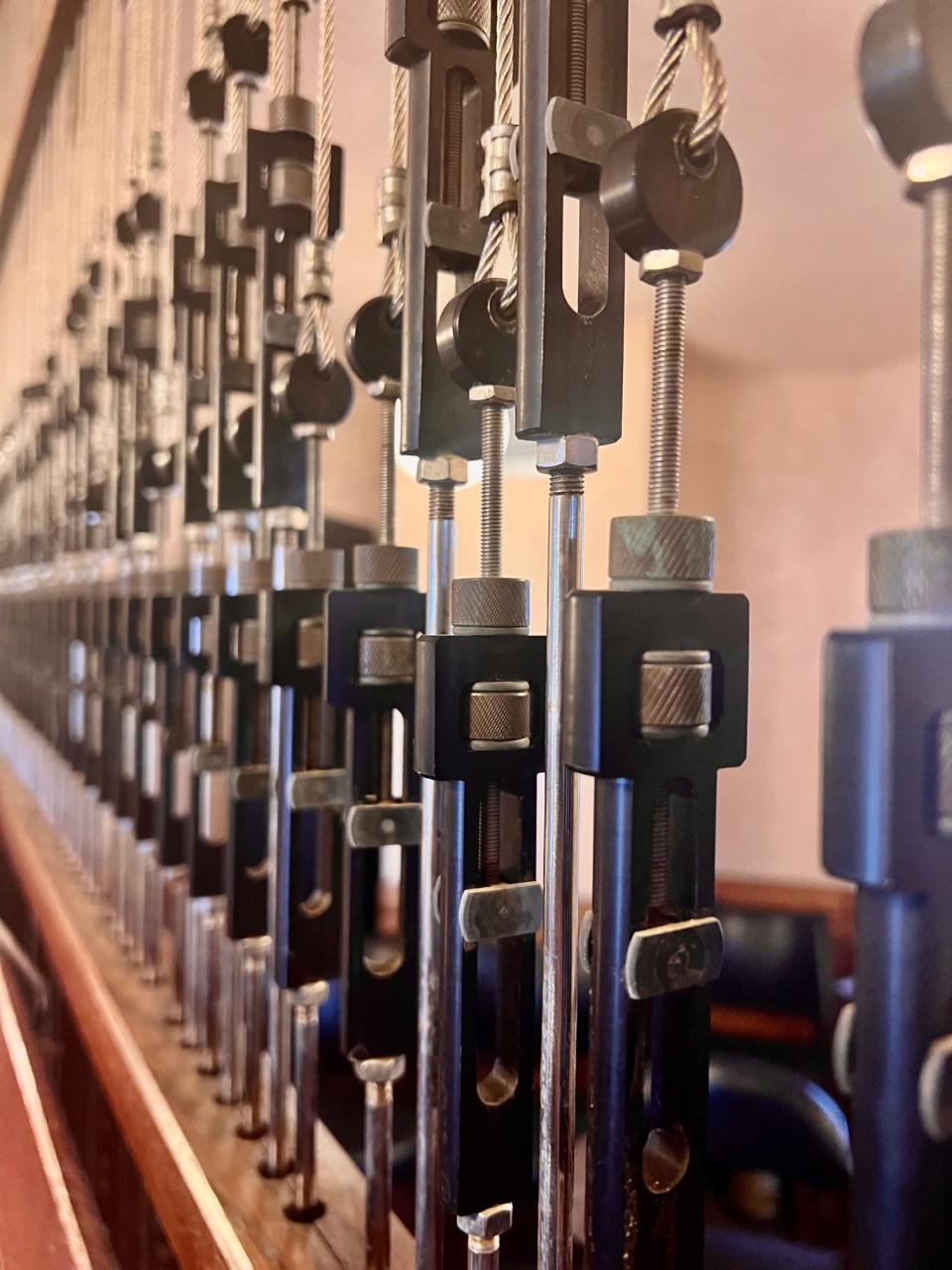
Q. What makes Bok’s carillon unique?
A. The sound of this carillon is exceptional. It was built by the Taylor Company, which in the 1920s was considered the best in the world – and they were. And their strength was big bells – this carillon has a total weight of more than 60 tons of bells. It sounds almost like an orchestra. Which means you can arrange everything from Bach and Mozart to Lady Gaga and everything in between. That’s unusual. I do a lot of arrangements and because I don’t have enough time to write everything down, I do a lot of arranging on the spot – improvising.
Q. Aside from improvisations, how many have you composed outright?
A. About 70 pieces.
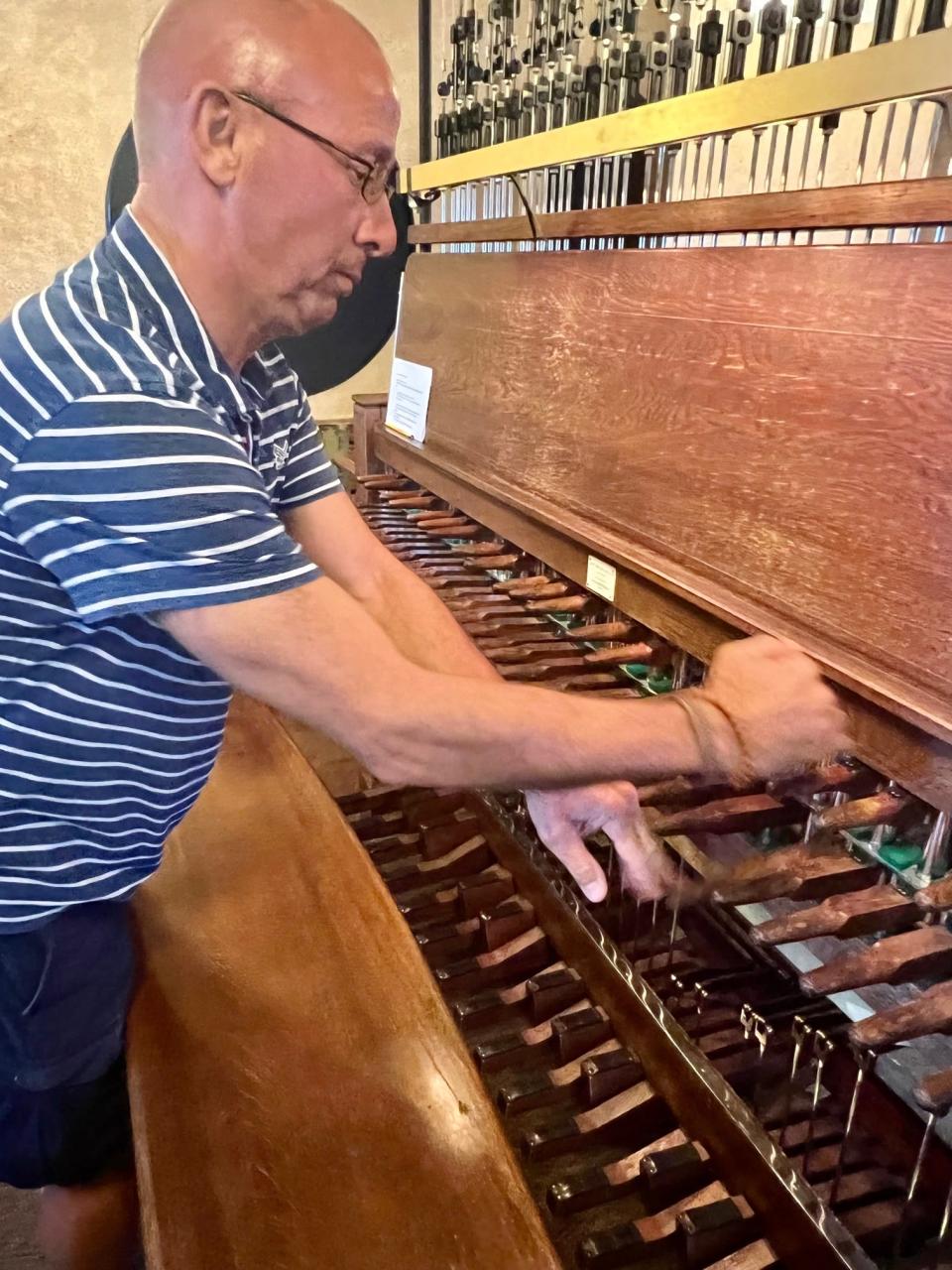
Q. Is there a wide difference among carillons and therefore of the pieces you can play on any individual one?
A. There’s a famous classical piece called the "Flight of the Bumblebee." If you play that on violin, it can pretty much sound like a bumblebee. But score it for double bass and it’s going to sound like a double bass. So every piece composed for carillon is composed for a particular instrument. There are many factors to consider. How many bells? How high is the tower – or how low? What is the weight of the bells? There are other carillons in Florida – Gainesville, Clearwater and Venice. The total weight of those instruments together is still less than our instrument here – they’re just so different. And that’s a challenge to adapt your repertoire.
Q. Regardless of the instrument, who is your favorite composer and why?
A. Bach, then Mozart. For some composers, you might say if he could have done this or that differently, it probably would sound better. Not Bach. Every single note is perfect. With Mozart, with a minimum of means he does so many things. He started composing symphonies when he was 4 or 5 years old. And his last symphonies – the year he died – he wrote one in June, one in July, one in August. Seriously, how can you write so fast? I couldn’t copy that fast. It’s mind blowing.
Q. Like Edward Bok, who created the tower and gardens in gratitude to America, you are an immigrant. What was your journey like?
A. I came to the U.S. in the 1990s, to Berkeley as university carillonneur and professor of music at the University of California, and I just fell in love with the country. It was more than music alone, it was all the national parks. After three years, I had the choice – stay in Berkeley or go back to Belgium, where a couple of really good job opportunities opened up. For whatever reason, from the first time I played here at 17, everything pointed back to the U.S. – coming for concert tours and making a lot of friends here. In 2012, I left Europe to live in the country I love most. I became a citizen five years ago.
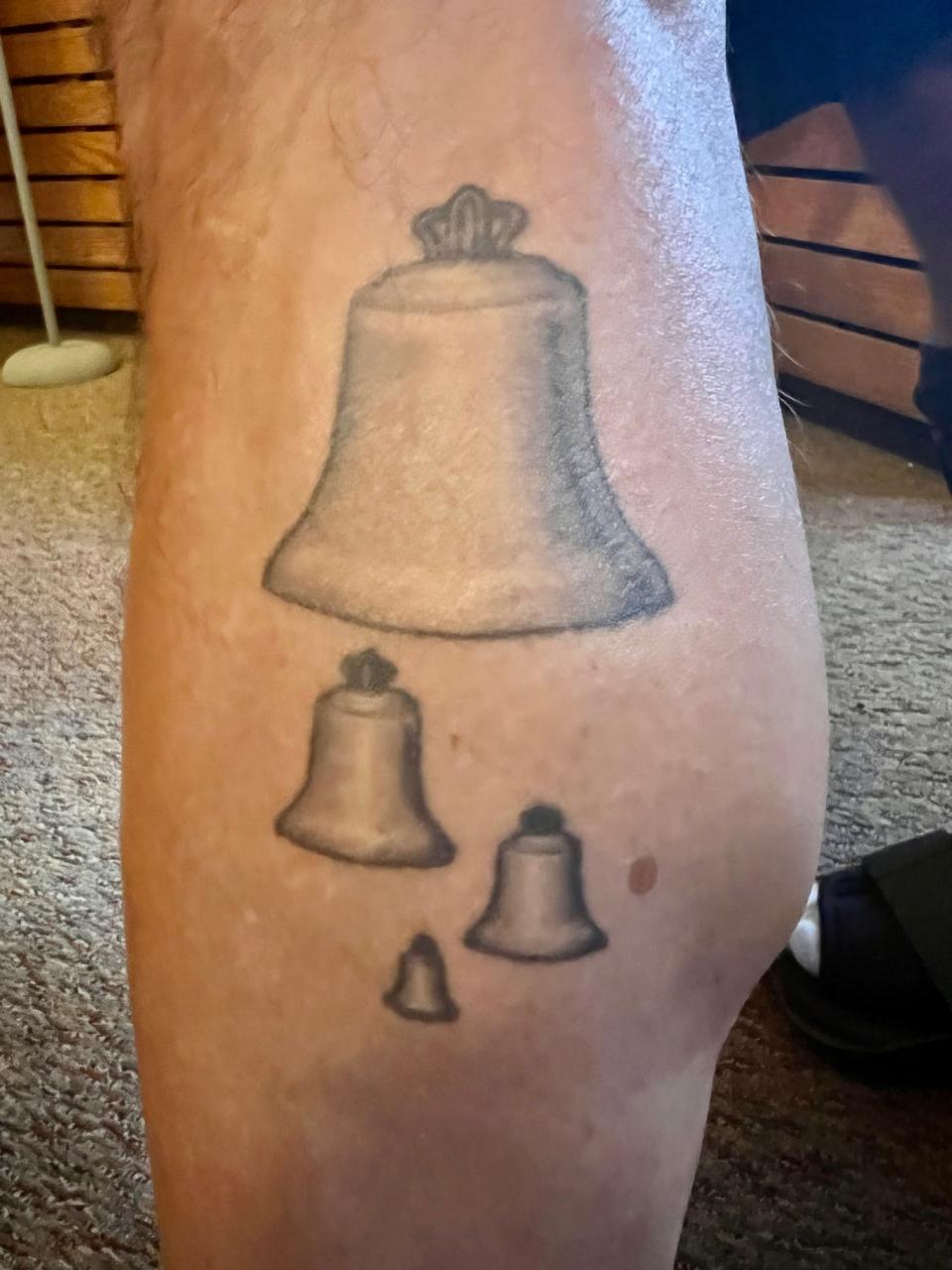
Q. How do you evaluate the impact Bok Tower Gardens has on the community, the arts and the culture of this area?
A. This is Florida’s hidden gem. All Bok’s senior directors here are trying to bring recognition of it to the public as much as we can. Still, for me, it’s a mystery why we don’t reach so many local people. We’ve had millions of visitors since the opening in 1929 and we’re in the middle of nowhere! It has a big impact on so many people from all over the world. So why can’t we get more people from Polk County? It’s a struggle though every year we’re doing better and better. It’s important that you have places like Bok Tower that really contribute to the arts in general in places that need it. If you go to New York, well, there’s enough there. But here we need more like Bok Tower.
Q. One of your contributions since coming was to start a carillon fellows program. You currently have a Yale graduate from California studying with you.
A. We’ve had students from all over the world. One of the unique things about this location is that you can play the carillon for hours and hours a day here, which is impossible in other places. Most of the other ones are in the middle of a campus where people are studying or in the middle of a city. But Bok Tower is surrounded by this big buffer zone of citrus fields. You can play until midnight here and no one will complain. That makes it a very unique program, I’ve had students from Poland, Canada, Belgium, Holland and the U.S., of course. The students have to play three days a week – program recitals – for seven months. It’s learning by doing.

Q. Easter sunrise services have been celebrated at Bok Tower Gardens for almost a century. What are your plans for this year?
A. I’m probably going to improvise on Easter hymns. Whatever I feel like, I’m going to do. That’s what I like about improv. I don’t program music two months in advance because how are you going to feel two months from now? Improvisation gives a lot of freedom. Suppose it’s a rainy day – you play uplifting music to make people happy. The thing about the carillon is you can create that collective happiness. You can irritate people too, but you can definitely make them happy and that’s what I'm going to try to do on Easter.
Thomas R. Oldt can be reached at tomoldt@gmail.com.
This article originally appeared on The Ledger: Ahead of Easter, carillonneur says there's no place like Bok Tower

